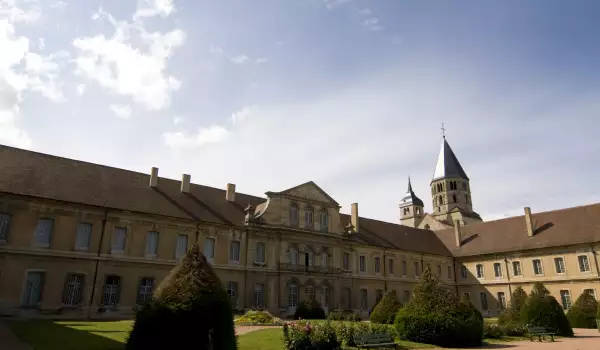Cluny Abbey

Cluny Abbey is an impressive monastery built by monks of the Benedictine Order. Thousands of monks lived here under the rule of St. Benedict bequeathed to the generations a now unique religious shrine, which is more than 1100 years old. Cluny is the center of the main monastic movement in the Middle Ages and the largest religious building before the enlargement of St. Peter Basilica in Rome.
Cluny abbey today is located in a French town, which arises in the course of history around the monastery. It is slightly north of Leon, in the French department of Saône-et-Loire. The complex of Cluny Abbey was built in Roman style, with three churches built between the 10th and early 12th century. The story begins in 910, the monastery was built on hunting grounds donated by William I the Pious, Duke of Aquitaine and Count of Auvergne.
The prince released the monks of the Abbey from all taxes and duties to him, he wanted them only to pray for his soul. It was expected that William would not be a patron of the monastery, but will retain control and influence over the monks, but it was not so. The monks from Cluny maintained links with the pope.
Branches of Cluny were called "priories", and the monastery's administration laid the foundations of a new practice. Before Cluny most monasteries were completely autonomous and kept in touch only informally. However, Cluny had "priority", observing what is happening in its branches, and they reported to the headquarters. This system worked out well for the monks of the abbey and around 1016 they expanded into the power of the Pope.

On September 30, 1088 began construction of the third church in Cluny Abbey, parts of which are preserved. This was the largest church in Christendom, which remains so to this day. In 1095 five altars of the temple were consecrated by Pope Urban II. Over the next centuries Cluny acquires followers throughout Europe. In the 12th century, in Cluny 10 000 monks had membership and had a voice before the pope. Four of them later even became popes. The total collapse of the Abbey Cluny comes during the French Revolution, when they bind to the "old regime" and the mobs half-destroyed the monastery.
Today most of the abbey is buried in ruins, but these still testify to the grand size of the monastery. The entrance from the village is in the classical architecture of the Porte d'Honneur. The belfry of the holy water has beautiful Corinthian columns. It is the best of the preserved part of the church. The monastery has a gothic building from the 13th century, which is actually a cellar, and above it is the storehouse for flour. This part is now transformed into a small museum where you can see models of the abbey, precious artifacts and parts of buildings that are already gone.
In Cluny Abbey is also a museum outlining beautiful masterpieces of Roman sculptures. There can be seen more parts removed from buildings in the complex, as well as the library of the monks. In the Hôtel-Dieu you can see beautiful frescoes. Today Cluny Abbey is considered one of the wonders of the ancient world.














